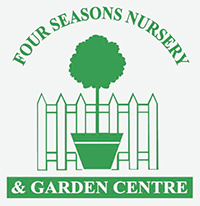10th Mar 2021
3 key considerations for your Sydney garden
Sydney has a unique growing climate which can vary throughout the year. The summers can be sweltering hot, often dry with bushfires being a common concern. Yet our winter temperatures can drop low enough to have frost occurring in certain parts of Sydney. We’re here every step of the way to help you through and ensure your garden is looking lush and fresh no matter the time of year. With three garden centres located across Sydney, we have the expertise and passion to help you with all your gardening needs.
Watering
Understanding how your plants need to be cared for is crucial and a huge part of this is watering. Doing your research on your plant’s preferred climate and growing aspect is the best place to start. At our garden centres, we stock a wide range of plants to suitable for all garden types, whether it be indoors or outdoors.
Sydney has its fair share of dry periods and our summer temperatures can be unforgiving. Choosing plants that have drought resistances such as Australian natives and cacti/succulents will make a big difference when it comes to watering frequency and establishment. That’s not to say you can’t plant some exotic beauties provided the area is suitable and some extra care is given.
For outdoor gardens, you should generally be watering once a day through summer and at dawn or dusk for best results. This is because the sun is not directly on the plants, and they have more time to soak up water. As the weather cools, this can gradually ease off and be sure to keep an eye on the weather as ultimately this will affect your watering requirements.
Indoor plants vary greatly, with some requiring watering a few times a week and some far less than that. A common mistake with indoor plants is to over-water. Generally, if leaves are looking yellow and limp, with blotches or mottling of the leaf, you are over-watering your plants. Give them time to recover and allow the soil to dry before you water again. Be careful of overwatering as this can lead to fungal problems with rotting and can often be hard to correct.
A good test is to insert your finger into the soil, if the soil clumps around your finger, chances are it is too wet. However, all plants are different, so ask your garden centre employees for instructions and if you’re unsure, take some photos to show our friendly staff so we can better assist the problems you may be facing at home.
Soil
It is important to keep your soil moist, but you should also take care that your plants are getting the nutrients they need. Compost is a great way to do this. Simply add compost to the top of the soil around the plant roots, they will do the rest! There are plenty of options when it comes to keeping your plants and soil rich in nutrients throughout the year and our staff will suggest the right product for you.
Mulch is important too as it will help your plants maintain their moisture. This is crucial in dry climates like Sydney. Our garden centre can assist you, but lighter and natural mulches are best. For example, sugar cane or bark make ideal mulch.
With scarce water and resources, you also want to make sure your hard work is going to your lovely garden and not to weeds. Our garden centre has products that can help with this, but regularly weeding your garden is the best way to keep this issue under control.
Always follow the rates and guides on our soil conditioners and fertilisers, even if you feel your plant is extremely lacking in nutrients. Over fertilising can cause more harm than good and is a common mistake in the gardening practice when trying to help sick or hungry plants.
Sun
Finally, plants need different levels of sunlight. The plants we sell at our garden centres come with general instructions on their tags, however it’s best to use the layout of the nursery as your guide to where they will grow best. Monitoring the amount of sun your desired area at home receives will help when choosing from our outdoor, shaded, or indoor areas.
You may be tempted to wet wilted leaves, but this can magnify the effect of the sun and harm your plants more. Consider moving your plant to a shadier area and choosing the right plant for the right location will make all the difference when planning your garden to begin with.
When it comes to indoor plants, it’s generally best to avoid direct sunlight unless it is the early morning sun. Although ultimately indoor plants only require bright natural light and do not require any direct sun to survive, some plants will even tolerate the lower light and darker rooms of the home.
It’s important to know what is realistic for your garden and the environment you live when visiting our garden centre. It can be tempting to focus on aesthetics, but this may not suit the climate and aspect of your garden. Our garden centre staff will be happy to assist you to combine the plants that you love with a realistic view of how to care for them. Your garden will be thriving and offer you joy in years to come!
